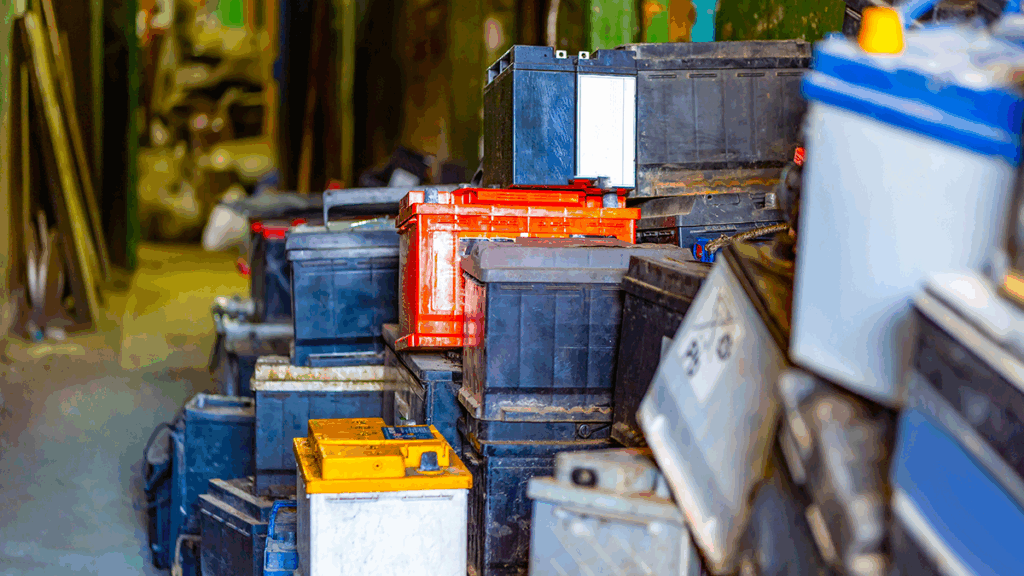As the global demand for lithium-ion batteries grows — driven by electric mobility and renewable energy — so does the need for advanced battery recycling technologies. Among the most critical enablers of safe and efficient recycling is vacuum technology. Vacuum technologies play an essential role across several key process steps, from material preparation to solvent recovery and quality assurance.
This article examines how different types of vacuum technologies contribute to the performance, safety and environmental integrity of modern battery recycling. Rather than proposing a one-size-fits-all solution, the article highlights the specific vacuum requirements of five different process stages and discusses the advantages and limitations of available solutions.

Image Source: Busch Vacuum Solutions
1. Enhanced safety in shredding
After the used battery has been fully discharged, it is shredded to break down the components. Shredding used batteries can be hazardous, due to the volatile nature of the liquid electrolyte and other materials. Sparks during shredding can ignite the electrolyte, leading to potentially explosive conditions.
Dry vacuum pumps: claw and screw technologies. Dry vacuum pumps, such as claw and screw vacuum pumps, are often the first choice for creating an inert and contaminant-free atmosphere in the shredding process. They effectively evacuate ambient air to allow the injection of inert gases like nitrogen, which drastically reduces the risk of ignition. Due to their oil-free operation, they are insensitive to contamination of the operating fluid by process gases, depending on the gases introduced. It makes them ideal where cleanliness and gas purity are essential.
Additionally, dry vacuum pumps are energy-efficient, especially in continuous operation, due to the absence of sealing liquids or oils. However, they come with certain limitations: exposure to corrosive vapors or particulates released during shredding may lead to wear unless corrosion-resistant coatings or materials are used. Furthermore, the initial investment is typically higher than for vacuum pumps running with an operating fluid, such as oil-lubricated or liquid ring vacuum pumps.
Liquid ring vacuum pumps: robust handling of wet gases. When transitioning from dry gas to vapor handling, liquid ring vacuum pumps become relevant. These vacuum pumps are excellent at managing the wet gases that emerge during the shredding process. Their lack of small gaps (and therefore lack of mechanical friction) makes them easier to assess in terms of ignition risk.
While liquid ring vacuum pumps generally consume more energy than dry vacuum pumps of comparable size when handling non-condensable gases, they can be more energy efficient when pumping condensable vapors, because the condensation within the liquid reduces the gas volume to be evacuated. This allows for smaller vacuum-pump sizing and lower energy consumption. However, they require the management of operating fluids, which can be a drawback in terms of operational efficiency and environmental impact.
Oil-lubricated rotary vane pumps: a compromise solution. Positioned between dry and liquid-based technologies, oil-lubricated rotary vane vacuum pumps present a pragmatic solution for the shredding process. They are mechanically simple, cost-effective, and capable of handling moderate vapor loads while delivering stable vacuum levels.
However, their reliance on oil introduces risk of contamination and necessitates additional components like oil mist filters and regular maintenance routines. Moreover, they are less suited for explosive atmospheres or applications demanding absolute cleanliness, limiting their use in direct contact with volatile shredding environments.
Consideration of ATEX requirements. In potentially explosive shredding environments, the use of ATEX-certified vacuum systems or vacuum pumps may be required to mitigate ignition risks and ensure compliance with European safety directives. However, ATEX certification is not necessarily mandatory. The responsibility to perform a comprehensive risk assessment and decide on the necessity of certified equipment rests with the operator. Depending on process-specific hazards, such as the concentration of flammable gases or the potential for spark generation, ATEX-certified solutions can offer an additional layer of safety and legal assurance. The choice of vacuum pump must align with the specific operational and safety requirements of the shredding step — factoring in gas composition, flammability risk, environmental controls and cost structure.